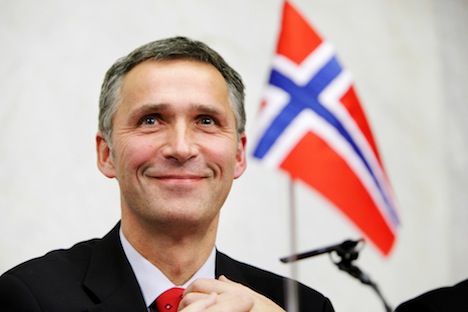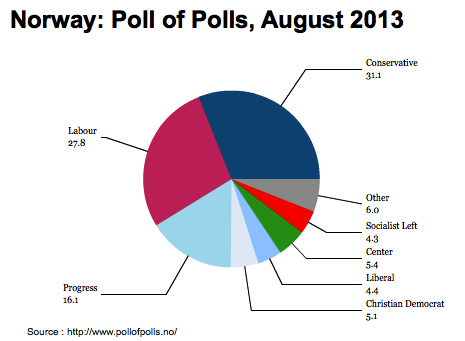Though he’s making headlines this week for his stunt as a barely-disguised cab driver cruising the streets of Oslo to get a sense of the frustrations of Norwegian voters less than a month before Norway’s parliamentary elections, prime minister Jens Stoltenberg has long seemed destined to lose the September 9 vote. ![]()
Stoltenberg, who leads the Arbeiderpartiet (Labour Party) and has served as Norway’s prime minister since 2005, is running for a third consecutive term, and poll shave consistently shown his party running behind the Høyre (literally the ‘Right,’ or Conservative Party), and Norway has braced throughout the year for the likelihood that its voters will elect a center-right government. It’s not unprecedented for Norway to have a right-leaning government — most recently, the Conservatives were part of a governing coalition led by Kjell Magne Bondevik and the Kristelig Folkeparti (Christian People’s Party) from 2001 to 2005. But if polls today are correct, the Conservative Party will actually win more votes than the long-dominant Labour Party, and therefore hold more seats in the Storting, Norway’s parliament, and that hasn’t happened in a Norwegian election since 1924.
But the polls are narrowing — the Conservative Party still leads the Labor Party, and taken together, the broad center-right parties expected to form Norway’s next government hold a double-digit lead over the broad center-left parties that currently comprise Stoltenberg’s governing coalition. One recent poll from TNS Gallup over the weekend showed the Conservatives with just 31.6% to 30.1% for Labour, much narrower than the five-point lead the Conservatives held only in July. Here’s the latest August poll-of-polls data:
As I wrote earlier this summer, Erna Solberg, the leader of the Conservative Party since 2004, became the frontrunner in next month’s elections by rebranding the Conservatives as an acceptably moderate alternative to Labour. In many ways, Solberg’s Conservatives today share more in common with Labour than with their largest presumptive coalition partner, the more populist, far-right Framskrittspartiet (Progress Party), a party. But there’s still more or less a month to go before voting begins, and many Norwegians are still focused on their summer holidays than on the late-summer campaign. That means there’s more than enough time for Labour to make up the difference before September 9.
While that doesn’t necessarily mean that Labour will return to government, it does mean that Labour has a shot at retaining its place as the largest parliamentary party in Norway and, in a best-case scenario, could potentially form a new, broader coalition, perhaps even with the Conservatives, to keep the Progress Party out of government.
Here are four reasons why that outcome isn’t as farfetched as it seems:
Continue reading Four reasons why cab-driving Stoltenberg has a chance at winning Norway’s election

